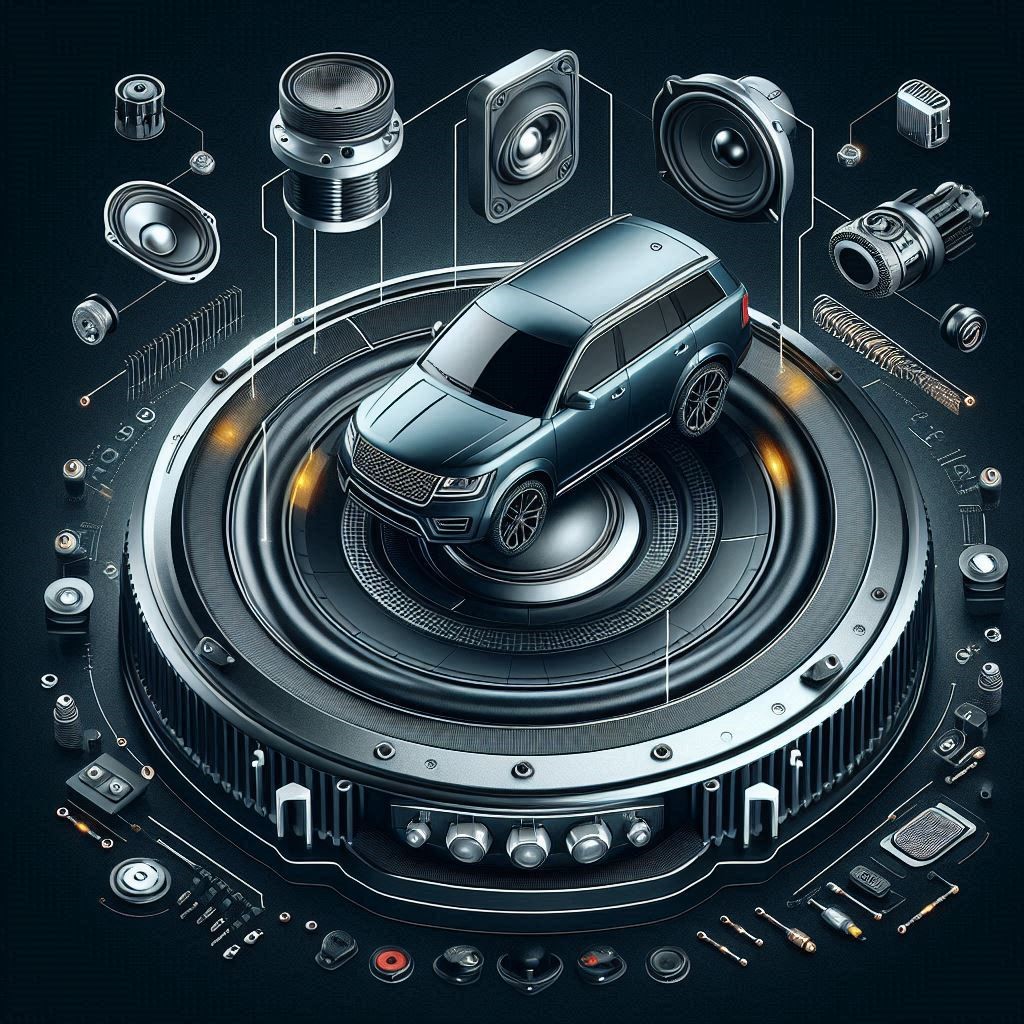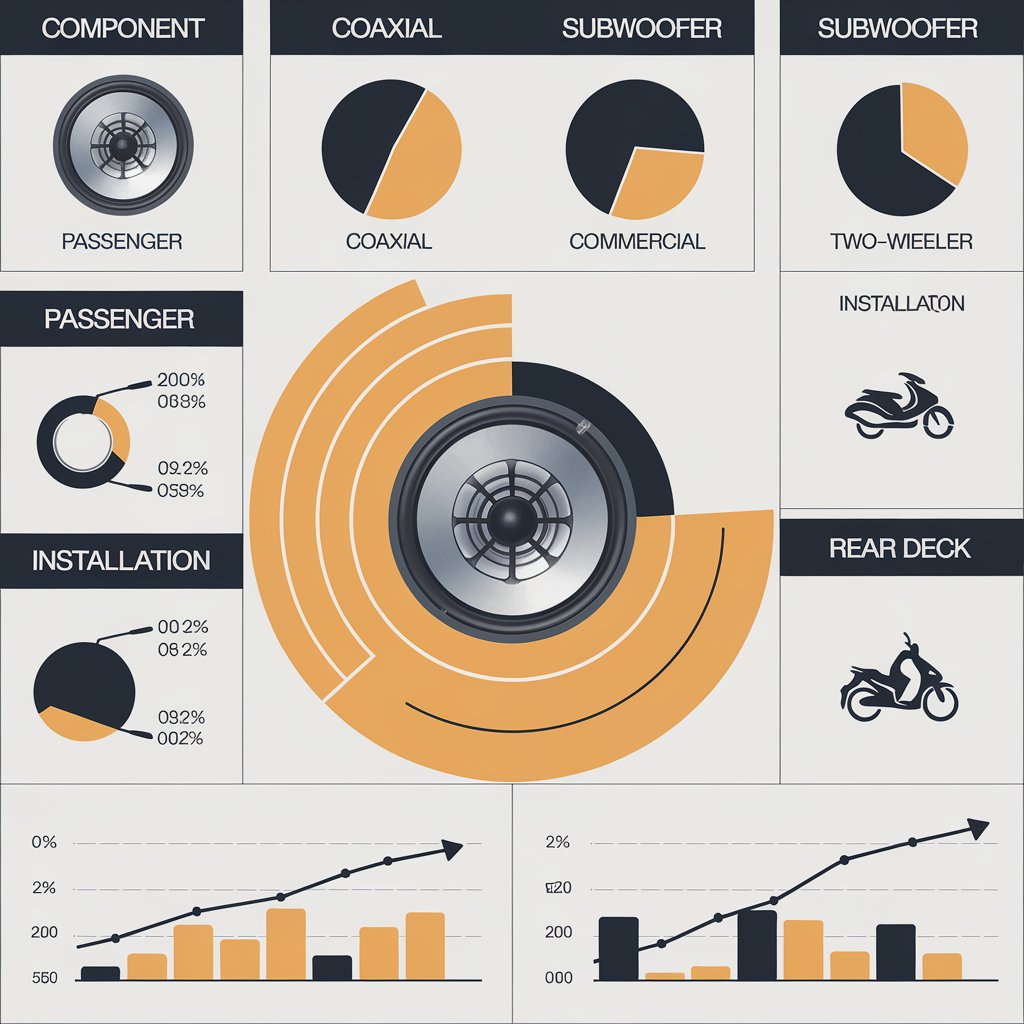The automotive speaker market has seen significant growth over the past few years, driven by advances in technology, rising consumer demand for high-quality audio experiences, and the increasing integration of infotainment systems in vehicles. As car manufacturers continue to enhance in-car entertainment features, automotive speakers have become a key element of the modern vehicle’s design. In this article, we explore the size of the automotive speaker market, the factors driving its growth, key trends, and future projections.
Current Market Size and Growth Trends
The global automotive speaker industry is expected to reach USD 12.92 billion in 2029 from USD 9.49 billion in 2024, at a CAGR of 6.4 , This growth reflects the increasing demand for better audio systems as consumers place greater emphasis on in-car entertainment, especially with the rise of electric vehicles (EVs) and connected car technologies.

Key Drivers of Market Growth:
-
Rising Consumer Demand for Premium Audio Experience: One of the primary drivers of growth in the automotive speaker market is the growing consumer demand for high-quality sound systems. Modern vehicles, especially premium and luxury models, come equipped with advanced audio systems from leading brands like Bose, Harman Kardon, Bang & Olufsen, and Bowers & Wilkins. These audio systems are often seen as a premium feature that elevates the driving experience.
-
Integration of Infotainment Systems: The integration of advanced infotainment systems into vehicles has significantly boosted the automotive speaker market. As infotainment systems evolve to include features such as streaming services, smart assistants, and immersive surround sound experiences, automotive speakers have become an essential part of these systems. Manufacturers are designing audio solutions that not only deliver high-quality sound but also integrate seamlessly with other in-car technologies like navigation, connectivity, and hands-free calling.
-
Rising Popularity of Electric Vehicles (EVs): The growing popularity of electric vehicles is another factor contributing to the rise of the automotive speaker market. EVs typically have quieter interiors due to the absence of an internal combustion engine. This quiet environment allows for more precise tuning of the car’s audio system, enabling manufacturers to offer premium sound systems to enhance the driving experience. Additionally, as EVs are often positioned as high-tech and eco-friendly, automakers are increasingly offering sophisticated in-car entertainment systems to appeal to consumers.
-
Technological Advancements in Audio Systems: The continuous advancements in automotive audio technology, such as active noise cancellation, 3D sound, and personalized audio experiences, are pushing the boundaries of what is possible in in-car audio. These technologies enable the creation of immersive sound environments, further boosting the demand for high-quality speakers and audio systems. Moreover, improvements in wireless connectivity and integration with mobile devices are making it easier for consumers to access and enjoy music, podcasts, and other audio content in their vehicles.
Download PDF Brochure @
https://www.marketsandmarkets.com/pdfdownloadNew.asp?id=192832677
Market Segmentation:
The automotive speaker market can be segmented based on several factors:
-
By Type of Speaker:
- Component Speakers: These speakers are designed to provide the best sound quality and often include separate woofers, tweeters, and crossovers. They are typically found in high-end vehicles or aftermarket audio systems.
- Full-range Speakers: Full-range automotive speakers are designed to provide sound across a broad frequency range and are commonly used in mid-range and budget vehicles.
- Subwoofers: Subwoofers are an essential part of premium sound systems, offering deep bass and enhanced low-frequency sounds. They are often included in high-performance audio systems.
- Coaxial Speakers: These are integrated speakers that combine the woofer and tweeter into a single unit. They are commonly found in standard and entry-level vehicles.
-
By Vehicle Type:
- Passenger Vehicles: The demand for automotive speakers is especially strong in passenger cars, including compact cars, sedans, SUVs, and crossovers. Consumers expect high-quality sound systems in all vehicle segments, including budget-friendly models.
- Commercial Vehicles: While less of a focus, commercial vehicles such as trucks and buses also contribute to the automotive speaker market, especially in higher-end models designed for comfort or entertainment during long drives.
-
By Distribution Channel:
- Original Equipment Manufacturers (OEM): Automakers are the primary source of automotive speakers, with major audio system manufacturers partnering with OEMs to provide speakers for new vehicle models.
- Aftermarket: The aftermarket automotive speaker segment is significant, as car owners seek to upgrade their vehicle’s audio system for better sound quality. The availability of specialized audio systems from third-party suppliers has created a large market for aftermarket audio upgrades.

Key Players in the Automotive Speaker Market:
Several companies are leading the automotive speaker market with their innovative products and strong partnerships with automakers. Key players include:
- Harman International (Samsung Electronics): A leading supplier of audio solutions, including the renowned Harman Kardon and JBL brands.
- Bose Corporation: Known for its high-quality audio systems, Bose has a strong presence in premium vehicles.
- Panasonic Corporation: Panasonic offers a wide range of audio products and partners with several automakers to provide infotainment solutions.
- Pioneer Corporation: Pioneer is a major player in both OEM and aftermarket automotive audio systems.
- Sony Corporation: Sony’s high-performance audio systems are widely used in a variety of vehicles, ranging from budget models to high-end ones.
- Alpine Electronics: A key player in the aftermarket automotive audio space, Alpine offers a variety of audio solutions that enhance vehicle sound systems.
Trends Shaping the Automotive Speaker Market:
-
Increasing Demand for Connected and Smart Audio Systems: Consumers are increasingly seeking integrated audio solutions that work seamlessly with smartphones, voice assistants, and streaming services. This trend is pushing automakers to enhance the connectivity of their infotainment systems, making advanced speakers a necessity for a fully connected driving experience.
-
Sustainability and Energy Efficiency: As the automotive industry shifts toward sustainability, manufacturers are looking for eco-friendly and energy-efficient solutions. Automotive speaker systems that use less power while delivering premium sound quality are becoming more popular, especially in electric and hybrid vehicles.
-
Customization and Personalization: As in-car audio systems become more sophisticated, automakers are focusing on offering personalized and customizable sound experiences. Features like custom sound profiles and adjustable sound settings are becoming standard in premium vehicles, further driving the demand for high-performance speakers.
Future Outlook:
The automotive speaker industry is expected to continue growing at a steady pace, driven by technological advancements in audio systems and the ongoing demand for superior in-car entertainment. The market is likely to see increased investments in connected and smart audio systems, as well as further integration of advanced features like noise-canceling technologies and surround sound. Additionally, with the rise of electric and autonomous vehicles, the automotive speaker market will continue to evolve, catering to the unique demands of new vehicle platforms.
In conclusion, the automotive speaker market is expanding rapidly, fueled by advancements in technology, increasing consumer expectations, and the evolving automotive landscape. As vehicles continue to evolve into more connected and entertainment-driven spaces, the demand for high-quality audio systems will remain a critical component of automotive design.
